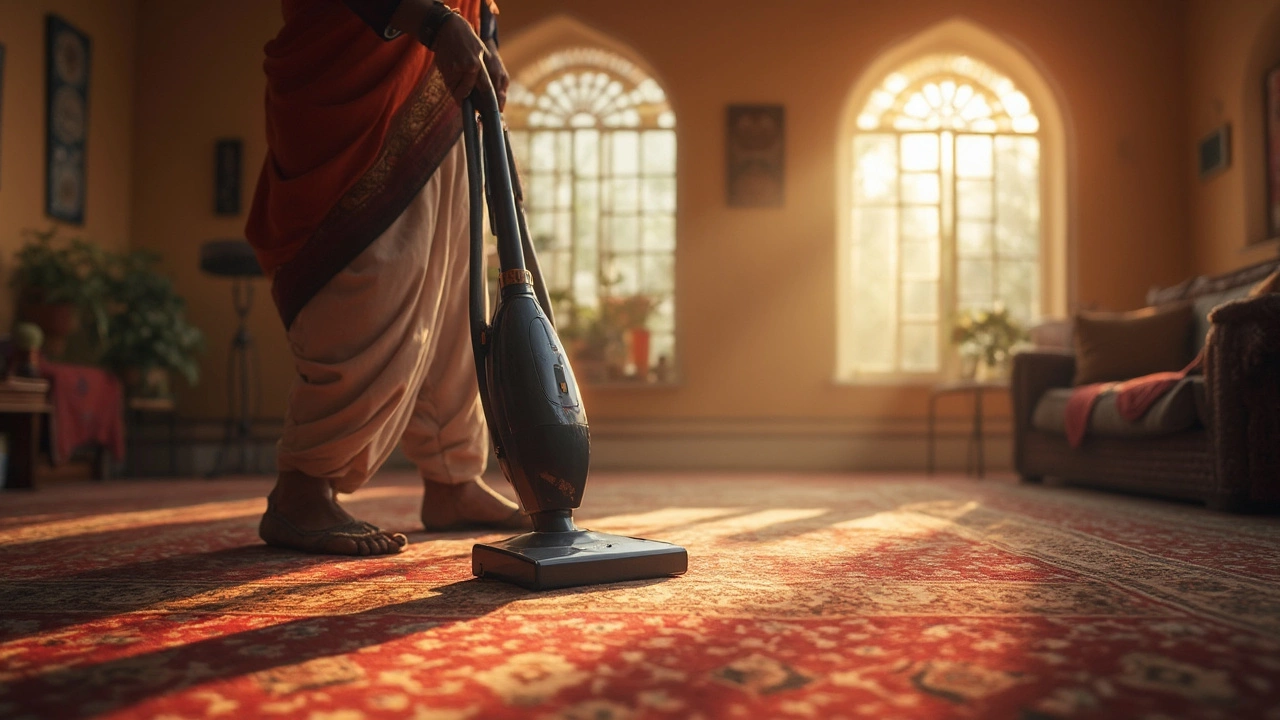
So, you're in the market for a vacuum cleaner and facing the age-old dilemma: bagged or bagless? Well, let's talk about why bagged vacuums might just make your life a whole lot easier.
First off, bagged vacuums do a stellar job at dust containment. The bag acts as an airtight seal, keeping all that pesky dust and allergens locked away until you’re ready to throw it out. No more dusty clouds in your face while emptying the canister!
If you're someone who suffers from allergies, you'll appreciate bagged vacuums even more. These machines often boast superior filtration systems and HEPA filters that snatch up even the tiniest particles floating around, leaving you breathing easier. Not to mention, bags are typically easier and cleaner to dispose of, compared to bagless counterparts that often kick up a dust storm upon emptying.
Plus, bagged vacuums can be quite the steadfast companions. They usually require less maintenance since you won't spend as much time cleaning filters or worrying about clogged cyclones. Invest in a few extra bags, and you're good to go for months, maybe even a year or more!
Dust Containment
When it comes to keeping your home clean, dust containment is a big deal, and bagged vacuums shine in this department. You know those moments when you empty a bagless vacuum and the dust seems to explode everywhere? Well, say goodbye to that. Bagged vacuums keep the mess inside the bag, so you don’t end up cleaning the same dirt twice.
One of the standout features of bagged vacuums is how effectively they trap dust and allergens. The bag acts as a barrier that seals in dirt, preventing it from leaking back into the air. That means less sneezing and more clean air to breathe, especially if you deal with allergies.
According to some studies, the dust particles trapped in a bagged vacuum are significantly lower when released back into the room compared to bagless models. The vacuum bags are usually made from multilayer materials designed to capture even the smallest particles. This means that the vacuum cleaner reviews often highlight bagged models for their exceptional dust handling.
Types of Bags
The bags come in different types – some are biodegradable, others are climate-friendly, and a few are enhanced with odor control to keep nasty smells at bay. Here’s a quick rundown:
- Standard Bags: Good for everyday cleaning, catching regular dirt and dust.
- HEPA Bags: High on the list for those with allergies, these trap tiny particles like pollen and pet dander.
- Scented Bags: Add a pleasant aroma to your cleaning routine, neutralizing musty vacuum smells.
This effective dust containment not only keeps your living space tidier but also prolongs the vacuum’s lifespan. Dirt and debris that escape a bagless system can damage internal components over time, leading to more frequent repairs or replacements.
A table that sometimes catches people off guard is the cost of replacement bags, as it can vary. However, the peace of mind knowing your home stays cleaner might be worth those extra bucks. Here's a fun fact: some people report changing their bags only a few times a year, depending on usage.
| Bag Type | Average Lifespan | Approximate Cost |
|---|---|---|
| Standard | 2-3 months | $1-2 per bag |
| HEPA | 2-3 months | $3-4 per bag |
| Scented | 1-2 months | $2-3 per bag |
So, if you want to tackle dirt without releasing it back into your living space, bagged vacuums offer a practical solution. They’re all about containing messes efficiently, which is great news for any clean freak determined to keep allergies at bay.
Allergy-Friendly Features
Got allergies in the house? Then a bagged vacuum might just be your new best friend. These vacuums are designed with folks like you in mind, aiming to keep dust, pollen, and those invisible nasties from launching a full-on assault on your senses.
Effective Filtration Systems
One of the key features of bagged vacuums is their advanced filtration system. Many models come with HEPA (High-Efficiency Particulate Air) filters, which are known to trap up to 99.97% of particles that are as small as 0.3 microns. That means they can capture mold spores, pollen, dust, and even some bacteria.
Plus, unlike bagless options where fine dust might leak back into the air during disposal, bagged vacuums hold onto that crud until you're ready to toss it all in the trash. It's a self-contained process, ensuring no extra allergens are stirred up in your home.
Sealed Bag Design
A big win for bagged vacuums is their sealed bag design. This design prevents dust from escaping when the vacuum is in use, which is particularly critical for allergy sufferers. The bag acts as an extra layer of filtration, catching things that the filters might miss.
| Allergen | Size (Microns) |
|---|---|
| Dust Mites | 200-300 |
| Plant Spores | 4-20 |
| Pollen | 10-100 |
This table gives you a quick look at what kind of particles we're talking about here. With these vacuums, you're stacking the odds in your favor against these household allergens.
Low-Effort Disposal
Lastly, when the time comes to swap out the bag, it's a breeze. You just remove it and toss it—no fuss, no nasty dust clouds suffocating you in the process. That convenience can make all the difference, especially when you just want to get the job done without triggering a sneezing fit.
So, if you're someone dreaming of cleaner, sneeze-free days, a bagged vacuum might be just the ticket. With their robust filtration systems and easy disposal, keeping allergies at bay becomes a whole lot simpler.

Maintenance and Longevity
So, why do bagged vacuums stand out when it comes to maintenance? Honestly, it's all about simplicity. Bagged models require less fiddling around with filters and parts that can get gunked up over time.
Less Frequent Maintenance
With bagless vacuums, you often have to clean or replace the filter and clear out any tangled dust or hair from the cyclones. But with bagged vacuums, your main job is just replacing the bag when it’s full—a straightforward task that keeps them running smoothly for longer.
"Bagged vacuums generally offer longevity and sustain performance over time due to their simplified maintenance needs." - VacuumReview.com
This simplicity translates into a longer lifespan. After all, fewer breakdowns mean you stretch your investment over many more years.
Stick to a Basic Routine
To make sure your vacuum lasts even longer, sticking to a basic care routine helps. Here's what you do:
- Replace the bag once it's about 70% full to maintain suction.
- Check or replace belts as needed to keep things running smoothly.
- Keep the floorhead and brushes clean from debris.
This little bit of attention goes a long way.
Sustained Cleaning Performance
One big plus is that bagged vacuums maintain consistent cleaning power. Even as the bag fills up, they lose less suction compared to most bagless models. It's kind of like having a dependable car that keeps getting better gas mileage.
Ultimately, if you want something reliable that stands the test of time, bagged vacuums are definitely up there. You just have less to worry about, letting you focus on more important things than filter cleaning!
Cost and Convenience
When it comes to upfront costs, bagged vacuums usually have a wider range to suit different budgets. While some might see the need to buy replacement bags as a drawback, it's worth considering that these handy bags often last a while before you need to switch them out. You might find yourself buying bags less frequently than anticipated, especially if you're not vacuuming every single day.
Replacement Bags: More Affordable Than You Think
Replacement bags are fairly priced and are available in bulk, which can further drive down the cost. Plus, let's not forget the trade-off here: less frequent emptying, which also means you're puzzling over how to dispose of the dirt and dust a lot less.
In terms of convenience, there are a few hidden perks with bagged vacuums. For one, they tend to keep the dirt contained even when you're dealing with a full load. This makes handling and disposal a much cleaner process compared to dealing with bagless models where you might end up having to juggle between your vacuum and a trash bin, risking a mess on your floors.
Maintenance Hassles Reduced
Bagged vacuums demand less maintenance in general. You won't be spending much time cleaning out intricate parts like filters or clog-prone areas. If you've ever had a battle with a stubbornly clogged cyclone on a bagless vacuum, you know how tiresome it can be.
A Cost Breakdown
| Expense Type | Estimated Annual Cost |
|---|---|
| Bag Replacement | $15 - $50 |
| Filters (Rarely Needed) | $20 - $40 |
The key takeaway is that while you might be regularly spending on bags, the convenience and potential increase in cleanliness can more than make up for it. After all, who wouldn't want a machine that gets the job done without all the fuss?